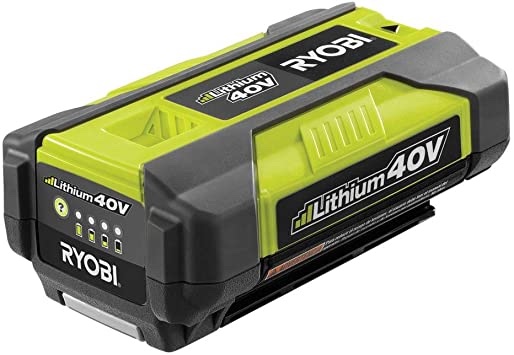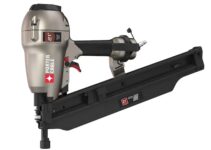Ryobi makes some of the most excellent power tools on the market but there are times when you will be faced with an issue like the Ryobi 40V battery not charging. There are a few reasons for this which will we break down in this article.
For your Ryobi 40V battery not charging problems, it could be that the battery has switched to sleep mode, has been exposed to extreme temperatures, or that the battery terminals have become corroded. Each of these problems has its own fixes, which you will find below.

Ryobi 40V Battery Not Charging: Causes & How to Fix
The Ryobi 40V Battery Not Charging problem is mostly the same for every power tool whether you own a weed trimmer, leaf blower, or motor, you will find one of the following fixes to work for you.
Likely Cause 1: Battery Entered Sleep Mode
One of the most common problems with Ryobi 40V battery is over-discharging. If you run down the battery, it will begin to show flashing red and green lights which means the battery has been over-discharged. In other words, the battery has entered sleep mode. This becomes a problem when trying to charge the battery. Being that the battery has been discharged to such a low level, the charge will have trouble detecting if the battery is healthy and will be unable to charge it.
Unfortunately, you won’t find a boost mode on Ryobi 40V charger that could be helpful in waking the battery from sleep mode. There are ways to boost the battery or bring it out of sleep mode. However, If the battery has been in sleep mode for a week or long, you might want to reconsider boosting it as it could be dangerous. With that in mind, you can try any of these fixes.
Fix 1: Use Another Battery
To boost your battery out of sleep mode, you will need a second fully charged battery of the same voltage. Match the terminals with the same polarity (positive to positive, negative to negative) using wires. Leave the connection for a couple of minutes and try charging the first battery. This could be enough to boost the first battery back to life and get it charging again.
Fix 2: DC Power Supply
If it should fail, then you can go for a DC power supply with the same voltage as your battery. The procedure follows the same steps as using a healthy second battery. Simply connect the terminals to their matching polarity as you did before and wait for a few minutes. After that, try charging the battery to bring it out of sleep mode.
Fix 3: The Last Option
You should only try this method if you don’t have a spare battery or power supply as in the previous fixes. Simply connect your charger to a power outlet and place the battery in the charger until the green indicator comes on. Just before the charger can switch to the flashing red/green lights, remove the battery from the charger. Repeat the process until the green light remains steady instead of switching to the red/green flashing lights. This could take up to 30 minutes to work.
The idea behind this fix is that plugging your charger into the battery will give it a bit of charge even though it might not be enough to boost the battery. By doing this continuously, you might give the battery just enough charge to get out of sleep mode.
Likely Cause 2: Battery Gets Too Hot or Cold
Another big problem that mostly affects lithium-ion batteries is extreme temperatures. While Ryobi tools are known to be highly durable, exposing the battery to extreme temperatures for long periods of time could render it useless which could cause charging problems. Take note, the optimal charging range for a Lithium-ion battery is 32°F to 113°F (0°C to 45°C).
So if you’re having problems with charging your Ryobi 40V battery, check if they’re too hot or too cold. If you’re in the winter season, then you need to ensure your batteries are in someplace warm. You should also watch out for hot days or avoid using the tool for too long as it could make it quite hot. If the battery is too cold, storing it at room battery should get it to charge again. If it is too hot, then you might want to keep it in the fridge for a short while.
Likely Cause 3: Corroded or Dirty Battery Terminals
In some cases, the battery could be okay and the terminals could be the problem. If the metal contacts on the battery or charger become corroded or dirty, the charger will be unable to detect that the battery needs charging.
For corroded battery terminals, you should use a bit of sandpaper and some elbow grease to get it off. Dirty terminals can be cleaned using a wire brush or an alcohol wipe.
Unfortunately, you could be dealing with recessed terminals as well as corrosion or dirt. You might want to be extra careful and patient when cleaning these terminals.
Likely Cause 4: Faulty Charger
In some cases, the charger could be the problem. You might want to try some other battery with the charger or try another charger with your battery. If both options give you positive results, then you know that your charger is at fault and will have to be replaced. If not, then you can move to the final fix.
Likely Cause 5: Change the Battery
If your battery is too old, unable to get out of sleep mode, this might be what you’re looking at. Sometimes, getting a new battery is all you need to get to bring the tool back to life. You can confirm that the battery is faulty by using another battery on your charger. If that battery works and yours doesn’t even after giving it a boost, then you will have to replace the battery. You can purchase a replacement Ryobi battery from your local supplier or head over to online retailers like Amazon.
